‘Nuraghi’ – Thousands Of Beehive-Like Towers Are Sardinia’s Greatest Mystery
A. Sutherland - AncientPages.com - We still need to learn more about our past. Here's an example.
Many races have ruled on Sardinia, but the only permanent feature of the island's prehistoric legacy is its stones and impressive, age-old towers known as the nuraghi.
Nuraghi Culture, Sardinia, Italy. Credit: Mihai Sorin Sirbu - Public Domain
They began to appear between 1900 and 730 BC and are still the island's greatest mystery.
Their builders were the so-called 'Nuraghians,' the second group of immigrants (after the Neolithic inhabitants of Sardinia), who came from the East during the third millennium BC.
The Nuraghians possessed considerable knowledge of architecture. They were an advanced culture from the very start. They began to build circular towers with sloping walls of natural stone; these structures are undoubtedly their legacy for future generations.
Although typical of Sardinia and only for this island, what the nuraghi have remained unclear.
According to Giovanni Lilliu, a great scholar of Sardinian archaeology, 'there are about 7.000 well-preserved nuraghi. Considering the ravages of time and the numerous invasions, it is clear that the original number of nuraghi was considerably greater.'
Su Nuraxi is a Nuragic archaeological site in Barumini, Sardinia, Italy. The complex is centered around a three-story tower built around the 16th century BC. Credit: Credit: Norbert Nagel - CC BY-SA 3.0
We need to find out what language the Nuraghians spoke. These people left behind no recorded history. As far as we know, they, unfortunately, had no form of writing.
Modern-day Sardinians call the nuraghi "high pillars" or "hollow towers."
Every nuraghe is a unique archaeological site that may be similar to other nuraghi but never the same.
The conical towers with truncated flat tops shaped like beehives consist of rough, unhewn stones piled layer on layer to form a building with inward-sloping walls.
Many of the nuraghi are only a few feet high, but some are of considerable size, reaching more than sixty feet. They were built of natural stones and without cement. Only the weight and position of the stones keep the walls standing. The rocks are well tied in one to the other using a building technique based on experience, which ensures that the walls would not fall.
Some were cut to shape when the stones were laid to fit perfectly. Their walls - built in a concentric circular shape - are between six and sixteen feet thick. The low towers contain only one chamber, but the tallest ones have three stories, circular stairs leading to the upstairs rooms, and niches and spaces cut out.
Nuraghe La Prisciona, Nuraghe village near Arzachena, Sardinia. Heinz-Josef Lücking - CC BY-SA 3.0 de
What was the purpose of the nuraghi, and from what part of the world was their prototype imported? How were the stones - usually hard basalt - cut and dressed by builders with no metal tools harder than bronze or copper? How were they moved?
They were neither burial places nor sanctuaries. Were they storehouses or dwellings? Some had defensive qualities, which was necessary because the Ligurians repeatedly attacked Sardinia, Phoenicians, Carthaginians, and, eventually, Romans.
The nuraghi were probably used by people exposed to continual attacks who needed refuge in emergencies.
Researchers also explored the towers' possible astronomical alignments. Builders turned the door towards the southeast, where the sun was known to rise, and several of the nuraghi's small windows had solar, lunar, and stellar alignments.
Written by – A. Sutherland AncientPages.com Staff Writer
Updated on February 7, 2024
Copyright © AncientPages.com All rights reserved. This material may not be published, broadcast, rewritten or redistributed in whole or part without the express written permission of AncientPages.com
More From Ancient Pages
-
 Blood Of St. Januarius – One Of The Most Remarkable Christian Relics
Artifacts | Jun 27, 2017
Blood Of St. Januarius – One Of The Most Remarkable Christian Relics
Artifacts | Jun 27, 2017 -
 LIDAR Discovers 18-Kilometer (11-Mile) Maya Road In The Yucatan Jungle
Archaeology | Dec 5, 2023
LIDAR Discovers 18-Kilometer (11-Mile) Maya Road In The Yucatan Jungle
Archaeology | Dec 5, 2023 -
 Mysterious And Abnormally Large Burials Found Near The Black Fortress In Armenia – Who Was Buried There?
Featured Stories | Jan 2, 2025
Mysterious And Abnormally Large Burials Found Near The Black Fortress In Armenia – Who Was Buried There?
Featured Stories | Jan 2, 2025 -
 Kukulkan (Quetzalcoatl): Feathered Serpent And Mighty Snake God
Featured Stories | Feb 7, 2017
Kukulkan (Quetzalcoatl): Feathered Serpent And Mighty Snake God
Featured Stories | Feb 7, 2017 -
 The Untold Story Of The Lost City Of Machu Picchu Ignored By Historians
Ancient Mysteries | Aug 4, 2020
The Untold Story Of The Lost City Of Machu Picchu Ignored By Historians
Ancient Mysteries | Aug 4, 2020 -
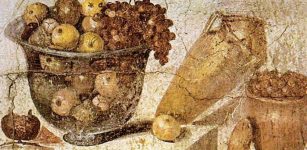 Food In Ancient Roman Funerary Meals Was Similar To That Consumed During Life
Archaeology | Aug 30, 2022
Food In Ancient Roman Funerary Meals Was Similar To That Consumed During Life
Archaeology | Aug 30, 2022 -
 Did The Plague Of Athens Come From Egypt Or Is It A Myth?
Archaeology | Dec 13, 2023
Did The Plague Of Athens Come From Egypt Or Is It A Myth?
Archaeology | Dec 13, 2023 -
 Riddle Of The Ancient Sarcophagus And Its Strange Properties – Can Science Solve This Mystery?
Ancient Mysteries | Nov 7, 2019
Riddle Of The Ancient Sarcophagus And Its Strange Properties – Can Science Solve This Mystery?
Ancient Mysteries | Nov 7, 2019 -
 10th Century Sculpture Of Sun God Surya Accidentally Found In Farmland In Andhra Pradesh
Archaeology | Nov 16, 2020
10th Century Sculpture Of Sun God Surya Accidentally Found In Farmland In Andhra Pradesh
Archaeology | Nov 16, 2020 -
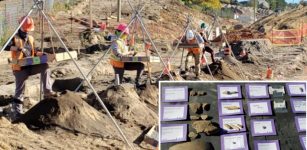 35,000 Unique Artifacts Discovered In 720-Year-Old Iroquoian Village In Canada
Archaeology | Oct 24, 2020
35,000 Unique Artifacts Discovered In 720-Year-Old Iroquoian Village In Canada
Archaeology | Oct 24, 2020 -
 Zawisza Czarny: Most Famous Polish Knight And The Quest For His Family Home
Featured Stories | Apr 26, 2016
Zawisza Czarny: Most Famous Polish Knight And The Quest For His Family Home
Featured Stories | Apr 26, 2016 -
 Mysterious Ancient Egyptian Royal Tomb Sheds Light On Little-Known Abydos Dynasty
Archaeology | Mar 17, 2025
Mysterious Ancient Egyptian Royal Tomb Sheds Light On Little-Known Abydos Dynasty
Archaeology | Mar 17, 2025 -
 Mysterious Ancient Mushrooms In Myths And Legends: Sacred, Feared And Worshiped Among Ancient Civilizations
Featured Stories | Apr 26, 2023
Mysterious Ancient Mushrooms In Myths And Legends: Sacred, Feared And Worshiped Among Ancient Civilizations
Featured Stories | Apr 26, 2023 -
 Battle Of Cape Ecnomus: One Of The Greatest Naval Battles In History
Ancient History Facts | Jun 17, 2019
Battle Of Cape Ecnomus: One Of The Greatest Naval Battles In History
Ancient History Facts | Jun 17, 2019 -
 Mediterranean Migration Was Low Over 8,000 Years – New Study
Archaeology | Mar 3, 2021
Mediterranean Migration Was Low Over 8,000 Years – New Study
Archaeology | Mar 3, 2021 -
 Thousands Of Remarkable Megaliths On The Sumba Island
Featured Stories | Aug 30, 2017
Thousands Of Remarkable Megaliths On The Sumba Island
Featured Stories | Aug 30, 2017 -
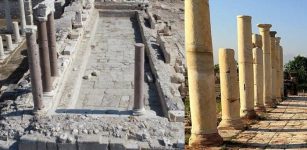 Massive 2nd-Century Fountain In Turkey’s Ancient City Of Tripolis Will Be Soon Restored
Archaeology | Aug 3, 2020
Massive 2nd-Century Fountain In Turkey’s Ancient City Of Tripolis Will Be Soon Restored
Archaeology | Aug 3, 2020 -
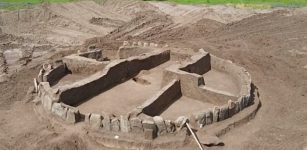 Ancient Secrets Of The Ukrainian Stonehenge That Is Older Than The Giza Pyramids Of Egypt
Featured Stories | Jul 17, 2021
Ancient Secrets Of The Ukrainian Stonehenge That Is Older Than The Giza Pyramids Of Egypt
Featured Stories | Jul 17, 2021 -
 Vindelev Treasure Re-Writes Ancient History – World’s Oldest Runic Inscription Of God Odin Found On Ancient Gold Pendants
Archaeology | Mar 8, 2023
Vindelev Treasure Re-Writes Ancient History – World’s Oldest Runic Inscription Of God Odin Found On Ancient Gold Pendants
Archaeology | Mar 8, 2023 -
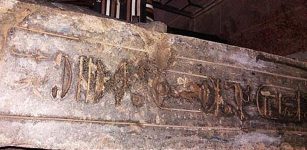 Black Granite Statue Of King Amenhotep III Accidentally Recovered
Archaeology | Jan 1, 2016
Black Granite Statue Of King Amenhotep III Accidentally Recovered
Archaeology | Jan 1, 2016



